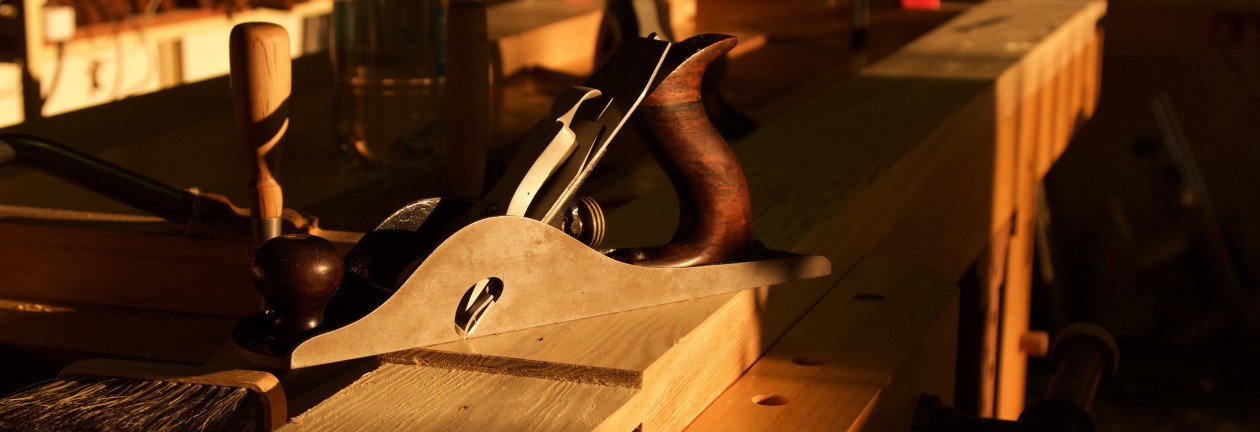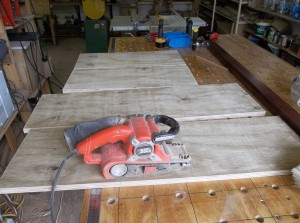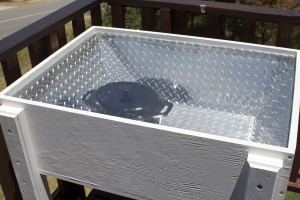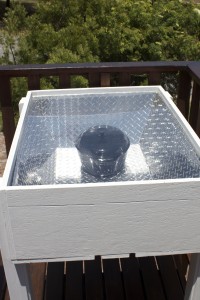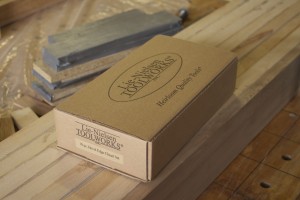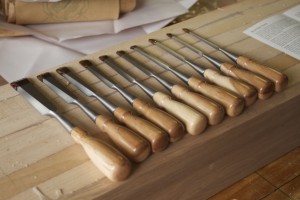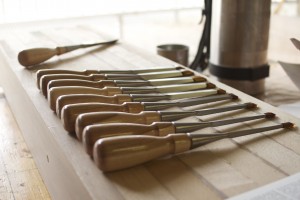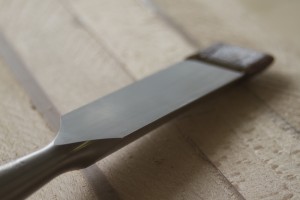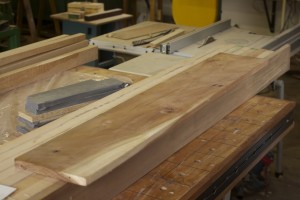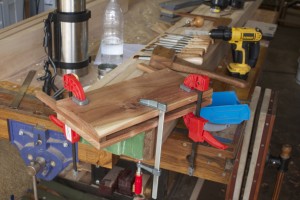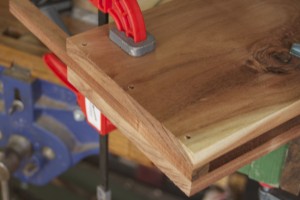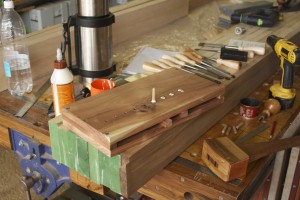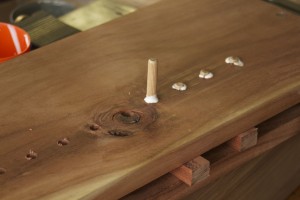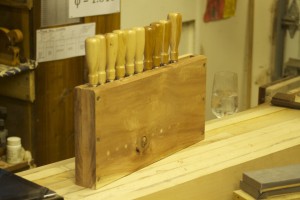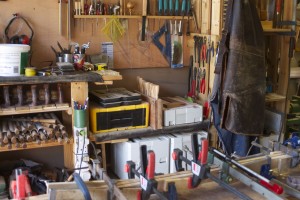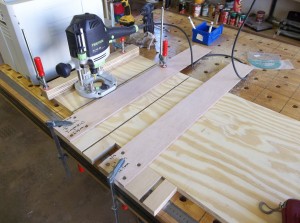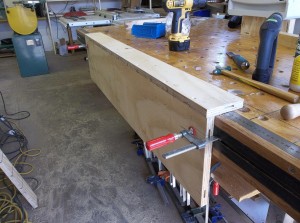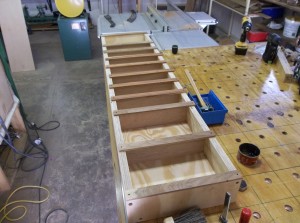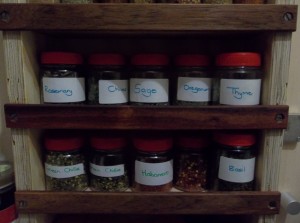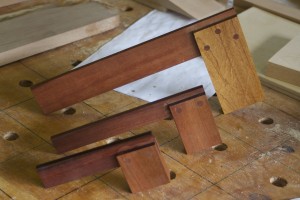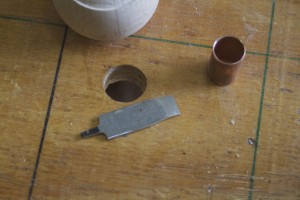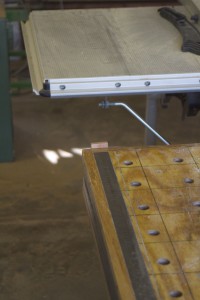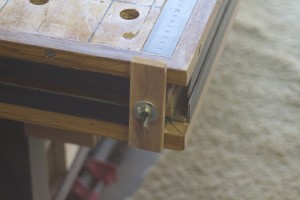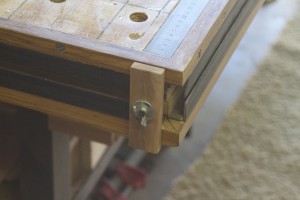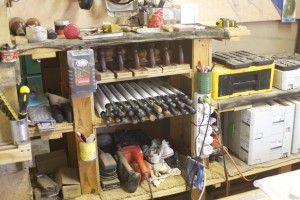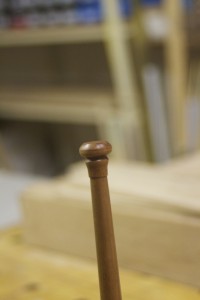28/10/2013 – As you might have noticed, my files recently found new accommodation. Now I want to replace their handles with shop made ones. For this task I found the Witpeer board as pictured below.

The board was a bit wavy so the first step was to chop it up into shorter bits. These were then ripped on my bandsaw into strips ideal for turning handles. I used the whole board for this purpose which would give me quite a few more handles than what I need at present, but I thought that I would just make heaps so all the handles look the same when I buy more files in future.




Before turning any handles I switched lathes as the grey one developed a wobble and is therefore now ear-taged to become a disc sander.


This is the first set of handles I turned and realised in the process that the stock is too thin to to turn such a long piece. I will turn them individually from now on.


In the pictures below you can see the process of tapping the ferrule over the end of the handle. The leading edge of the copper ferrule is chamfered in order to slide without digging into the wood which was turned to be ever so slightly bigger than the inside diameter of the ferrule. I first lubricate the wood and inside of the ferrule with epoxy, then tap the ferrule over by hitting the back of the handle with my dead-blow mallet, while the ferrule is pushed firmly against the bench hook. I wrote an entire post on how I made this and a number of other mallets. The post is titled “Mallet Mania”.
The design of the handle is my interpretation of the Lie-Nielsen handles made specifically for the Auriou rasps they sell. This design feels comfortable in the hand and gives me several different grip options while doing different filing tasks.






I hope to be able to turn the bulk of the handles this weekend and will update the post with the result of my efforts next week.
3/11/2013 – On Saturday I turned 5 more of the large handles and furnished them with ferrules.

On Sunday I decided to see how many of each size handle I actually need.


Then I took the stock that was cut for the handles and marked out the different handles to correspond to the the numbers needed of each size. For this task I used the ruler on my assembly table with the ruler stop pictured. It is as simple as butting the stock against the ruler and marking the different lengths with a pencil and square. I will write a short post on how this stop was made in the next day or so. You will find a whole series of posts on how I built the assembly table under the category “bench”.
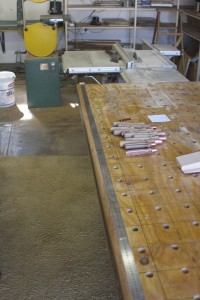
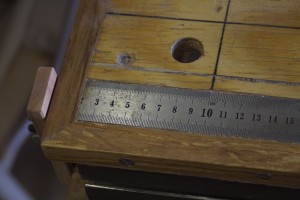

Here are the fruits of my labor ready for the next step.


As I explained already, it became apparent that one can only turn one or at most two handles from a length of stock before it becomes wobbly. I assume this is because it is too thin. I therefore had to shorten the stock that was prepared last weekend. I took this opportunity to get plenty of hand sawing practice. As you can see, my Lie-Nielsen carcass saw and shop made mitre box came in handy.


Then came the prep work for the lathe. I used my shop made Dead-blow mallet (http://www.jenesaisquoiwoodworking.com/mallet-mania/) and scratch awl (http://www.jenesaisquoiwoodworking.com/apodytes-dimidiata-scratch-awl/) together with a Lee Valley centre finder for this purpose.


In the pictures below you can see how my medium sized handle turned out. This would become the handle for the bulk of my files. In the second picture you can compare it with the large handle and in the last one with the small handle.

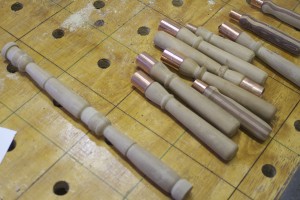



Then came the small handle.






After a hour or so of turning, I needed to do something else. So I seated four large files. In order to know which file to grab devised a code which goes on the heel of the handle. In the first picture you will see the halve round shape with XL inside. This means it is a halve round extra large file. The SC-S refers to it’s double cut smooth grit. The second photo shows a square shaped extra large double cut bastard grit file. Hope you get the idea.


Four extra large files, seated with the information on the heel of the handle.
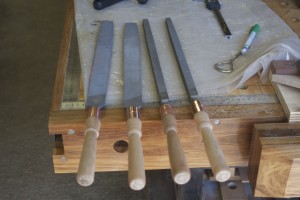

Here they are after a coat of tung oil.









11/11/2013 – During the past week I continued to turn, seat ferrules, oil and seat these handles.




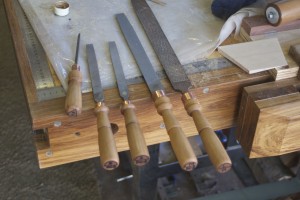



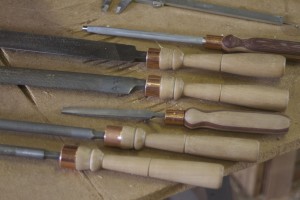

Here you can see how the Witpeer handles are slowly replacing the horrible plastic ones.




2/2/2014 – This weekend I made a concerted effort to finish the file handle project. In the pictures you can see the last crop being processed.
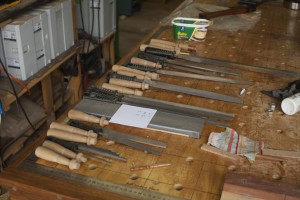


Like this:
Like Loading...
